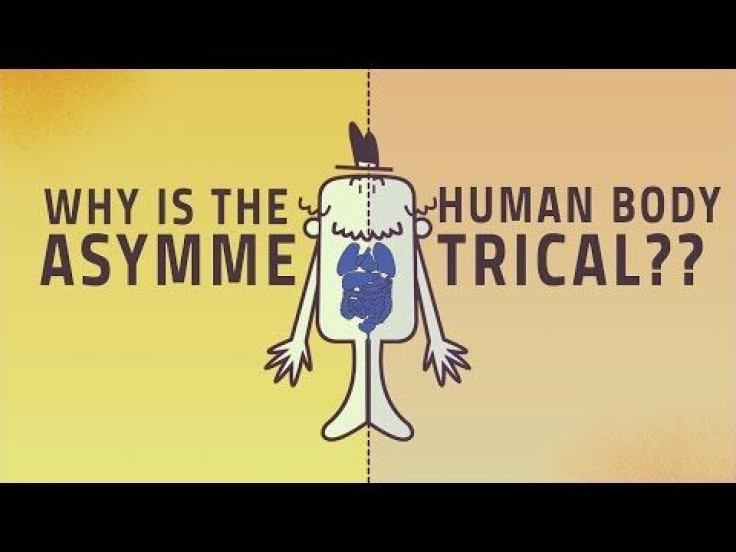Anatomy And Physiology: Human Body Becomes Asymmetrical After Embryo Develops Differences

Most of us have noticed the inevitable with our bodies — one foot, one hand, or one eye is bigger than the other. These differences may be due to a variety of factors, like handedness or injuries, but it’s important to remember we’re not symmetrical beings. In TED-Ed’s latest video, "Why are human bodies asymmetrical?" host Leo Q. Wan explains that although the human body looks symmetrical on the outside, most of our vital organs are arranged asymmetrically.
This asymmetry is linked to a theory that is focused on the node in the embryo. The node is lined with tiny hairs called cilia, which whirl round and round at a rate of 10 times a second, all in the same direction, according to Wan. This synchronized rotation pushes fluid from the right side of the embryo to the left.
On the node’s left hand rim, other cilia notice this flow and begin to activate specific genes on the embryo's left side. These genes direct the cells to make certain proteins, causing the left and right sides of the embryo to be chemically different, although they still look the same.
These chemical differences are what lead to the first visible asymmetry — the heart. It starts out as a simple tube, but when the embryo is around three weeks old, it loops to the left. The heart begins to grow different structures on each side, producing the chambers and vessels required to pump blood.
Meanwhile, the other major organs start moving. The stomach and the liver move clockwise away from the midline to their ultimate positions. The large intestines sprout an appendix on the right. The right lung grows three lobes, while the left only grows two lobes. These visible changes arise long after the embryo has developed differences on its left and right.
Basic building blocks in the human body, like nucleic acids, proteins, and sugars, are inherently asymmetric. Proteins, which have complex asymmetric shapes, control the way these cells migrate, and which way embryonic cilia twirl. These biomolecules have a property called chirality, which means a molecule and its mirror image aren't identical. For example, take our right and left hands; if we try to put our right hand in our left glove, we can immediately spot the difference.
As a society, we continue to value symmetrical looks as signs of beauty, but asymmetry holds an allure of its own with its striking imperfections.



























